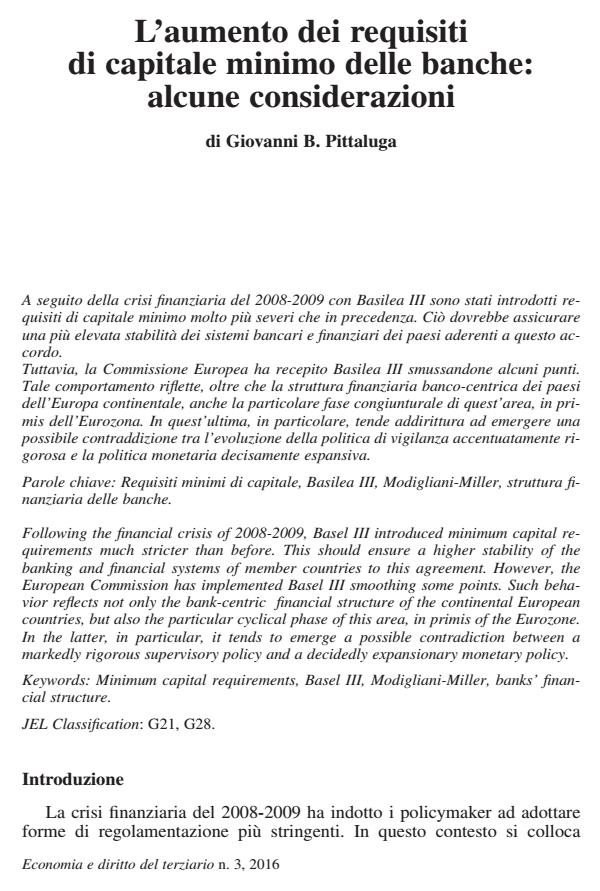L’aumento dei requisiti di capitale minimo delle banche: alcune considerazioni
Titolo Rivista ECONOMIA E DIRITTO DEL TERZIARIO
Autori/Curatori Giovanni B. Pittaluga
Anno di pubblicazione 2017 Fascicolo 2016/3
Lingua Italiano Numero pagine 14 P. 409-422 Dimensione file 453 KB
DOI 10.3280/ED2016-003004
Il DOI è il codice a barre della proprietà intellettuale: per saperne di più
clicca qui
Qui sotto puoi vedere in anteprima la prima pagina di questo articolo.
Se questo articolo ti interessa, lo puoi acquistare (e scaricare in formato pdf) seguendo le facili indicazioni per acquistare il download credit. Acquista Download Credits per scaricare questo Articolo in formato PDF

FrancoAngeli è membro della Publishers International Linking Association, Inc (PILA)associazione indipendente e non profit per facilitare (attraverso i servizi tecnologici implementati da CrossRef.org) l’accesso degli studiosi ai contenuti digitali nelle pubblicazioni professionali e scientifiche
A seguito della crisi finanziaria del 2008-2009 con Basilea III sono stati introdotti requisiti di capitale minimo molto più severi che in precedenza. Ciò dovrebbe assicurare una più elevata stabilità dei sistemi bancari e finanziari dei paesi aderenti a questo accordo. Tuttavia, la Commissione Europea ha recepito Basilea III smussandone alcuni punti. Tale comportamento riflette, oltre che la struttura finanziaria banco-centrica dei paesi dell’Europa continentale, anche la particolare fase congiunturale di quest’area, in primis dell’Eurozona. In quest’ultima, in particolare, tende addirittura ad emergere una possibile contraddizione tra l’evoluzione della politica di vigilanza accentuatamente rigorosa e la politica monetaria decisamente espansiva.
Parole chiave:Requisiti minimi di capitale, Basilea III, Modigliani-Miller, struttura finanziaria delle banche
Jel codes:G21, G28
Giovanni B. Pittaluga, L’aumento dei requisiti di capitale minimo delle banche: alcune considerazioni in "ECONOMIA E DIRITTO DEL TERZIARIO " 3/2016, pp 409-422, DOI: 10.3280/ED2016-003004